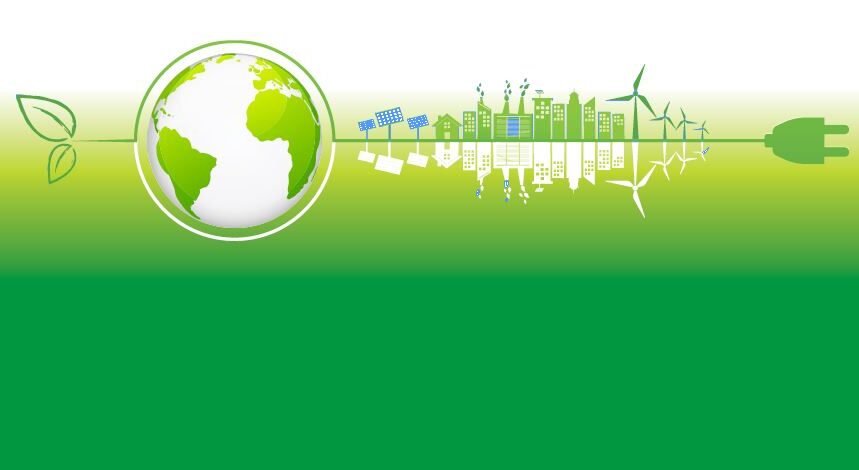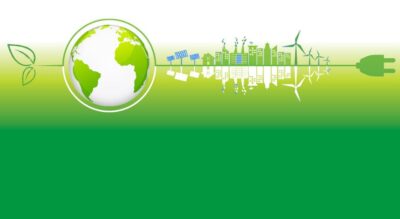For centuries, construction has been an industry that relies on natural resources. From ancient times to modern-day construction, the world has relied on the planet’s natural resources and materials derived from those resources to build communities across the globe. The Industrial Revolution was a significant turning point in history. The transition from hand production to machine manufacturing impacted every aspect of life, particularly in the United States and spurred innovations in manufacturing, production, assembly lines, agriculture, and electrical systems. Mass consumption of natural resources, which has had a substantial impact on the environment, was also produced.
In the modern-day, the United States has witnessed an increase in the number of extreme weather events, the need for energy, and global events that have all impacted our access to efficient and reliable power. Those same factors affect Rosendin’s overall business – including estimating, engineering, purchasing, Research & Development (R&D), and project management.
What Changes Have We Seen?
In the last 20 years, Rosendin has observed significant changes in lighting and control design, metering, photovoltaic, and electric vehicle charging station requirements. Today, most electrical systems are controlled by “smart” devices and tied to a building management system (BMS). The upfront cost to install these systems is expensive, but owners receive a better product with significant cost reductions for maintenance and operation phases.
According to Ron Wilson, Rosendin VP of Engineering, we have seen an enormous push toward greater energy efficiency in the last 20 years. “It started with fluorescent sources and moved to compact fluorescent sources that have evolved into today’s LED sources. This has dropped the lighting load and corresponding mechanical loads in facilities.”
“The result is a dramatic decline in the overall facility energy needs for lighting.”
Wilson says, ” Emissions and sustainability requirements have pushed us to design more thoughtful and often locally produced equipment and devices. When properly executed, we can save the emissions of hauling equipment across the country or worldwide and support the local economy.”
“There has also been a focus on Net Zero Carbon requirements to reduce the amount of carbon a facility produces to the absolute minimum. These facilities generally don’t use natural gas for heating or cooking and rely on electrical power. The designs involve larger electrical equipment capacity and higher energy use, but the elimination of carbon emissions offsets them. When designing these facilities, we must be aware of the requirements and provide feedback on the tradeoff between carbon-producing sources and zero or near-zero carbon-producing sources.”
Bill Mazzetti, Senior Vice President of Research & Development, agrees. “The bottom line is that MPE [multiphase extraction] systems are now using a fraction of the water, power, and natural gas used previously. This is both by system efficiency as well as better design application. Twenty years ago, we used over 2 W/SF for lighting an entire facility. Now it’s down to <3/4 W/SF. This keeps getting tougher, and the system we design, specify, install, and operate is falling right in line. It’s not optional; it’s compulsory.”
How Do Sustainability Requirements Impact Us?
According to jurisdictions, sustainability requirements for new construction and renovations vary across the country. It is not only government requirements that can impact Rosendin’s projects but also the goals of our customers. Many customers have implemented plans for facilities to be powered solely by renewable energy sources, with LEED certification continuing to be a goal. Vu Le, Chief Estimator in San Jose, notes that “some cities are already implementing 100% EV Capable or Ready for Parking Stalls, although the state does not require them to implement at that level.”
The willingness of cities to implement sustainable measures without legal requirements is evidence of a trend observed by Mazzetti, “Sustainability is so ingrained in design and construction today that it’s an assumption in North America.” Wilson has also seen a push for on-site and regional energy production and microgrids, “This brings the production closer to the load and allows more energy autonomy for the local facility or region. We will need to continue to look at locally sourced and low carbon producing material.”
Rosendin keeps a close eye on upcoming changes through membership on code and governmental committees where we can influence change.
How Does Extreme Weather Impact Us?
Many people are curious about how extreme weather events impact Rosendin, including heat, cold, flooding, and tornadoes, to name a few. Craft workers primarily feel the effects of these events, creating job site work stress. Rosendin’s R&D team collaborates with our craftspeople on different types of cooling/heating systems for job sites, exoskeletons for endurance and safety support, and other robotics to assist in work that has a high strain on muscles and joints. In addition, Rosendin’s safety and project management teams are working diligently to create work environments free from harassment, hazing, and bullying, where all are treated as people first and not hired hands.
Creating positive and safe work environments includes on-site shelters from the forces of nature, food trucks, safety equipment designed for different body types, personal tools, and the like. Survivability means we can maintain business before, during, and immediately following a designed-for event. As we forward-think about how we can keep our job sites safe, we know that not every system can survive a catastrophic event, but we will work to ensure our teams are as safe as possible. The fact is that risks to both facilities and businesses evolve.
Sometimes one must stop and reevaluate and spend some money to harden the facility.
Many people deny climate change. Whether this is a normal cycle or a trend, it is undeniable that the planet is getting hotter. Rosendin is always looking at how we can use material better, specify lower power consumption systems, and generate less waste. Rosendin’s R&D team performs industrial engineering in the built environment. It is part of our everyday work and sensitivities.
What About Battery Storage?
While Rosendin continues to see growth in nearly every market, one area has become a hot topic over the past several years: battery storage.
Battery storage has come to the forefront of conversation for several reasons. As renewable energy production increases, the need to stabilize energy production has become much more critical. The renewables sources, while clean, are intermittent. As a result, there needs to be something to backstop these sources when they are not producing at optimum levels. In the case of solar power, cloud cover will reduce production, sometimes dramatically, and solar energy cannot be produced during night hours. The same is true of wind sources. Wind is variable, and contrary to popular belief, high-velocity wind does not increase energy production.
Battery Energy Storage Systems (BESS) provide this backstop and create a stable distribution grid at the Utility level.
Another reason BESS has become a topic in recent years is the ability to provide stability at a local or regional level, reducing the reliance on the transmission grid and allowing added capacity. With extreme weather events and aging electrical infrastructure, having energy available at a local or regional level can reduce the chances of a major power outage affecting many people and businesses for an extended amount of time.
For generator surrogates, a BESS can be easily swapped for any generator; however, current battery technology has a couple of handicaps. First, current electrical and life-safety codes do not recognize a BESS as a code-allowed emergency power source. Second, they are about 25-40% more expensive on a kW-kW basis over generators and fuel. Third, there’s a big disconnect between fuel storage/battery run time requirements in code requirements or client standards.
Yet, air quality issues and the number of generators allowed on the job sites are getting substantial pushback from authorities having jurisdiction, and clients are now trumpeting climate change as a core value. Rosendin is working with several hyperscale customers to transition their infrastructure to fewer generators and more batteries. Rosendin has an invention called BESSUPS, which replaces the generators AND UPS power system, dropping the data center’s electrical cost by 80%. But, it’s a giant leap for a very risk-averse business. Our teams expect BESSUPS to be a mainstream system by 2025.
What Does the Future Hold?
Rosendin’s future continues to have a bright outlook. As we grow, Rosendin’s entire team remains committed to its core values and how those values show up in our work. As an employee-owned company, we are constantly working with an eye on our future, including the future of our planet, and being mindful of how we can build sustainability into our projects and facilities.
On April 22nd, Rosendin will celebrate Earth Day with a week of initiatives and challenges to remind and engage our employees, families, and customers to care and invest in our planet. Sustainability is the path to prosperity because a green future is a prosperous future.
https://online.flipbuilder.com/pjyf/mhaq/


